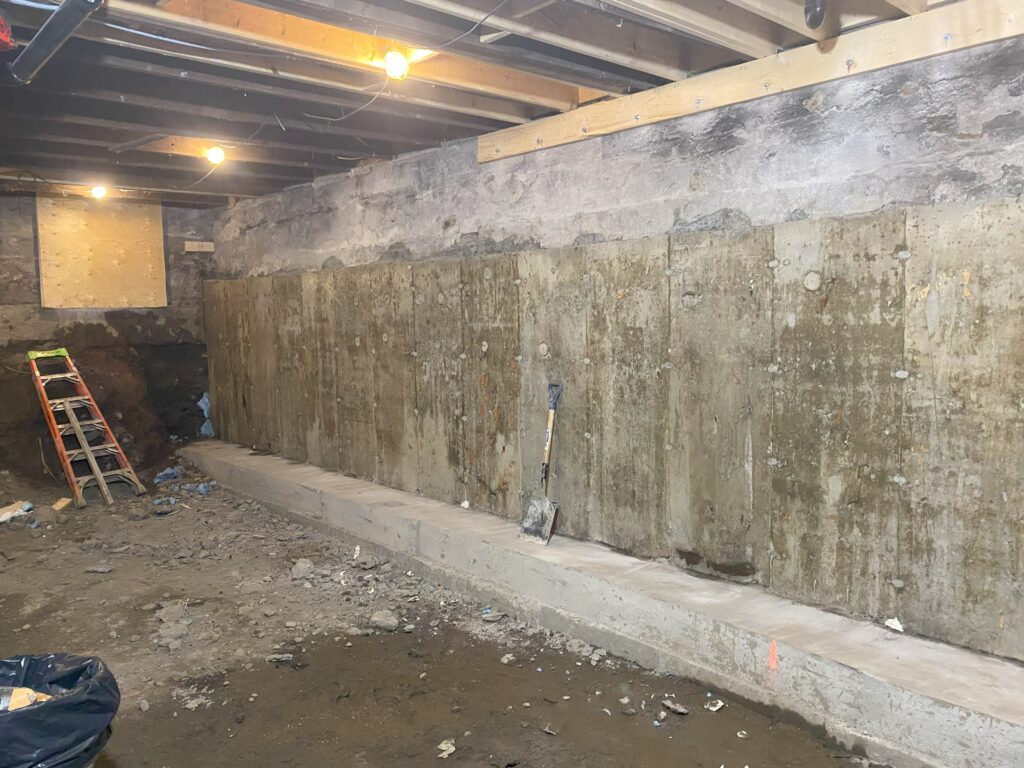
UNDERPINNING FOUNDATION AND CRAWLSPACE
Underpinning is a crucial process used to strengthen and stabilize foundations, particularly in homes with crawl space foundations. It involves reinforcing an existing foundation to improve structural integrity, especially in cases of settling soil, changes in property usage, or the need to increase space. Additionally, underpinning is an ideal solution for homeowners looking to transform a crawl space into an income-generating unit, such as an apartment or suite. In this blog post, we’ll walk you through the underpinning process, its benefits, and what homeowners can expect.
Recognizing the Need for Underpinning
Signs of Foundation Issues:
Before proceeding with underpinning, it’s essential to recognize the signs that indicate your foundation may need this treatment. Common indicators include:
- Mold and/or Mildew:
Persistent mold growth is a sign of excess moisture, which can compromise the foundation and indoor air quality.
- Allergies:
Increased allergy symptoms can stem from poor air quality due to mold spores and dust in a damp crawl space.
- Water on the Floor or Wet Concrete:
Excess water accumulation in the crawl space can lead to serious structural problems, fostering mold growth and affecting the home’s foundation.
- Lingering Humidity and Bad Odors:
High humidity levels and musty smells in the crawl space are indicators of poor ventilation and moisture issues.
- Condensation:
Excessive condensation forming on pipes or the foundation itself suggests humidity issues that can lead to further deterioration.
- Damaged Beams and Joists:
Visible sagging in beams and joists often points to foundational issues requiring immediate attention.
- High hydro consumption:
Damp conditions can lead to increased heating or cooling costs, as moisture can affect the efficiency of your HVAC system.
If you notice any of these warning signs, Contact us to consult with a qualified foundation specialist.
Initial Assessment and Planning
Consulting Professionals:
The first step in the underpinning process is to consult a highly qualified building engineer or foundation specialist. They will assess your foundation and determine if underpinning is necessary, as well as recommend the best methods for your specific situation.
Design and Planning:
Once you have the necessary approvals, create a detailed plan that includes timelines, materials needed, and an estimated budget. It may also be wise to inform your neighbors about the upcoming work, especially if it will cause disruption.
Permits and Regulations:
Obtain the required permits from your local building authority. Compliance with local regulations is vital for any foundation work, including underpinning.
1.Preparing the Site
Site Preparation:
To begin the underpinning process, clear the area around your foundation and crawl space. This includes removing obstacles such as landscaping, debris, or structures that may hinder the work.
Excavating the crawlspace: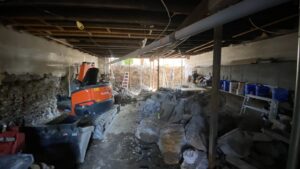
At this stage, an opening will be created in the foundation to access the soil or rock beneath the building. This excavation is critical for properly installing the underpinning supports. Carefully excavate the soil or rock from under the existing foundation so that the new supports can be placed effectively.
Setting Up Temporary Supports:
Install temporary supports using steel beams and hydraulic jacks to support the home while the underpinning work is performed. Safety is paramount, so ensure that the supports are correctly placed and regularly monitored.
2.The Underpinning Process
Methods of Underpinning:
There are several underpinning methods, and the choice depends on the specific issue your foundation faces. Common methods include: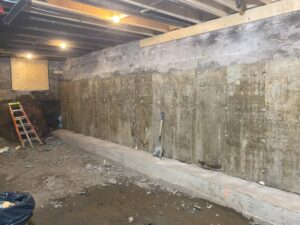
- Helical Piers: These are screw-like piers drilled into the ground to provide foundational support, ideal for unstable or weak soils.
- Concrete Pilings: This method involves pouring concrete piers beneath the existing foundation to stabilize it.
Executing the Underpinning Work:
Once the method is chosen, the underpinning work will be executed based on the outlined plan. This may involve excavating below the existing foundation to install the chosen structural supports.
3.Finalizing the Underpinning
Installing a French Drain: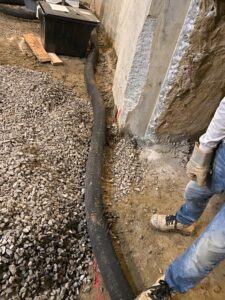
Alongside underpinning, installing a French drain is an effective way to manage water flow and prevent moisture accumulation in the crawl space. A French drain system directs water away from the foundation, reducing hydrostatic pressure and the risk of water damage.
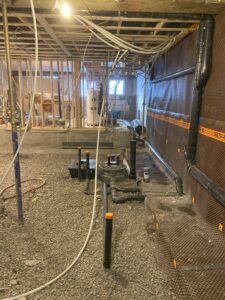 Installing a Sanitary Pump:
Installing a Sanitary Pump:
If your crawl space is prone to flooding or water accumulation, incorporating a sanitary pump—or sump pump—is essential. This pump will effectively remove excess water and keep the area dry, enhancing the overall stability of the foundation and preserving the health of any living space created below.
Backfilling: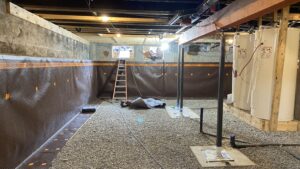
Once the underpinning is confirmed to be stable, backfill the excavated areas with soil. Compact the soil properly to remove air pockets which could affect stability.
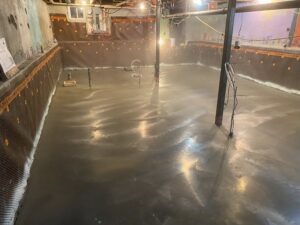 Pouring the Concrete Slab:
Pouring the Concrete Slab:
Following the installation of the underpinning supports, a new concrete slab will be poured to create a sturdy foundation for the crawl space. This slab serves as a solid floor, providing support and insulation while also helping to manage moisture levels. Ensure that the concrete is properly mixed and poured to achieve the necessary strength.
4.Post-Underpinning Considerations
Inspecting the Work:
A final inspection by a highly qualified building engineer or building inspector should be conducted. This step is crucial to ensure that the underpinning has been executed correctly and meets all necessary local building codes.
Conclusion
Underpinning is a valuable solution for homeowners experiencing foundation issues, particularly in properties with crawl space foundations. By recognizing the signs of foundation distress, don’t wait— consult with a highly qualified building engineer. If you need assistance or an evaluation of your foundation, Contact us today for expert advice and support tailored to your specific needs. Prompt attention to foundation issues can help you avoid costly repairs and preserve the integrity of your home for years to come. you can reinforce your home’s stability and support your investment for the long term. Moreover, transforming your crawl space into an income-generating unit is an attractive benefit that can enhance both your property value and your financial situation.
If you suspect foundation issues or need professional advice about underpinning, Contact us today. Our experts are here to provide tailored solutions, including foundation repair, drainage systems, and maintaining a safe and dry environment, ensuring your foundation is secure and reliable for years to come!

